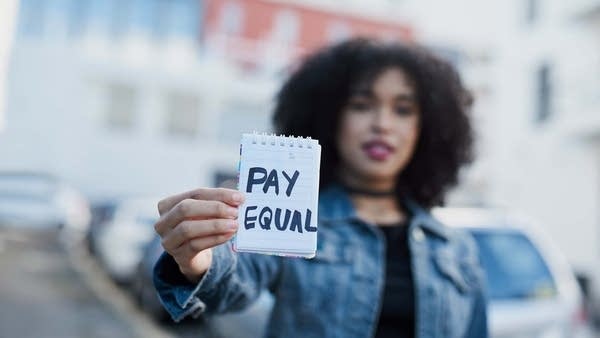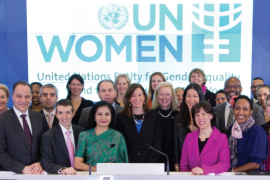When Cordelia Adakule, a brilliant software developer in Lagos, discovered that her male colleague, less experienced and trained by her, earned almost 30% more for the same role, she was devastated. “It was not just about the money,” she said, “it was about respect.” Cordelia’s story is echoed by millions of women across the world. Despite working just as hard, if not harder, women are still consistently undervalued in the global labor market.
On September 18, 2025, the world pauses to mark International Equal Pay Day, a day dedicated to exposing and addressing this injustice. This year’s theme, “Policy Options to Close the Gender Pay Gap Over the Life Course,” calls on governments, organizations, and societies to design strategies that ensure women are paid fairly, not just at one stage of life, but throughout their entire careers.
What is the Gender Pay Gap?
The gender pay gap refers to the disparity in earnings between men and women for work of equal value. Globally, women earn about 20% less than men on average, according to UN Women and OECD reports. While the gap varies across countries and sectors, its persistence is undeniable and deeply entrenched.
The pay gap is not just about numbers; it represents lost opportunities, undervalued contributions, and systemic barriers that undermine women’s economic independence and dignity.
Why This Day Matters for Women
Equal pay is not merely an economic concern; it is a matter of human rights. Denying women fair wages undermines the principle of equality enshrined in international law. It is also a cornerstone of economic empowerment, allowing women to invest in their families, education, and communities. And finally, raising global awareness about pay inequities puts pressure on institutions to act and holds societies accountable for closing the gaps.
Factors Driving the Gender Pay Gap
The pay gap is reinforced by overlapping challenges. Discrimination in hiring and promotions keeps women from advancing as quickly as men. Occupational segregation channels women into undervalued fields such as caregiving and education, while male-dominated fields like technology and finance command higher wages. The motherhood penalty, career breaks, reduced hours, or slowed progression due to unpaid care work create lifelong financial disadvantages. And persistent gender stereotypes continue to shape perceptions of women’s capabilities, limiting opportunities from childhood through adulthood.
Women at the Forefront of Change
Across the globe, women are not only demanding fair pay but actively shaping solutions. They are leading advocacy campaigns, mobilizing communities, and drafting policies that center women’s economic rights. Women’s organizations are lobbying for pay transparency laws, while networks of female professionals are mentoring younger women to break into higher-paying industries. From grassroots movements to international forums, women are speaking with one voice: equal work must mean equal pay.
This collective momentum underscores that women are not just victims of inequality; they are architects of transformation, ensuring that future generations inherit a more just and equitable workplace.
Successes Worth Noting
There are signs of progress. Iceland has made pay transparency a legal requirement, forcing companies to prove they pay fairly. Spain mandates gender-based pay reporting, equipping women with the tools to challenge unfair practices. In parts of Africa, new labor reforms are strengthening maternity rights and narrowing the pay gap. These steps, while uneven, show that systemic change is possible when political will, legislation, and accountability align.
Note from Amazons Watch Magazine
To accelerate meaningful change and close the persistent gender pay gap, Amazons Watch Magazine calls on policymakers, organizations, and communities to rise to the moment with bold commitments and practical action:
- Reform and Enforce Policies: Governments and corporate institutions must go beyond statements of intent and implement concrete measures such as pay transparency laws, mandatory gender pay audits, and enforceable penalties for inequality. Without accountability systems, promises remain empty. Clear, measurable policies will ensure that organizations treat equal pay as a non-negotiable principle rather than an optional standard.
- Invest in Care Infrastructure: The motherhood penalty continues to disadvantage women economically, often for a lifetime. To correct this, nations and workplaces must invest in affordable, accessible childcare systems, expand equitable parental leave policies, and promote flexible work options for both men and women. By recognizing and redistributing care responsibilities, women can remain active contributors to the workforce without being penalized for motherhood or caregiving.
- Promote Women in Leadership: Representation matters. Women bring unique perspectives that reshape organizational cultures and decision-making processes. Ensuring greater female presence in boardrooms, senior management, and executive leadership roles is essential not only for fairness but also for business success. When women are empowered to lead, they create pathways for others, dismantling barriers that have historically kept women out of the highest-paying and most influential positions.
- Challenge Stereotypes Early: The fight against inequality begins long before women enter the workplace. Schools, families, and communities must actively challenge stereotypes that limit girls’ aspirations, encouraging them to embrace STEM subjects, leadership roles, and non-traditional career paths. By instilling confidence and dismantling gendered expectations early, we can build a future workforce where societal norms do not curtail a girl’s ambition.
- Support Collective Action: Finally, women must be empowered to advocate for themselves and others through unions, associations, and networks. Collective bargaining has historically been one of the most powerful tools for securing fair wages and safe conditions. Supporting women’s voices—whether through worker organizations, advocacy groups, or professional networks—ensures that demands for equality are not silenced but amplified and acted upon.
Conclusion
Cordelia’s experience reminds us that equal pay is not just about salaries; it is about dignity, respect, and justice. On International Equal Pay Day 2025, the world must recognize that women’s labor is the backbone of economies and societies, yet too often it is undervalued.
The gender pay gap is not inevitable; it is a human-made injustice, and therefore, it can be undone. With bold policies, collective action, and a global commitment to fairness, we can close the gap across the life course and secure a future where every woman is paid what she is worth.
At Amazons Watch Magazine, our message is clear: a woman’s worth is not negotiable. Equal work must mean equal pay, today, tomorrow, and for generations to come.





Comments are closed.